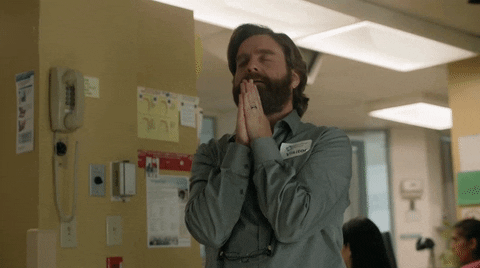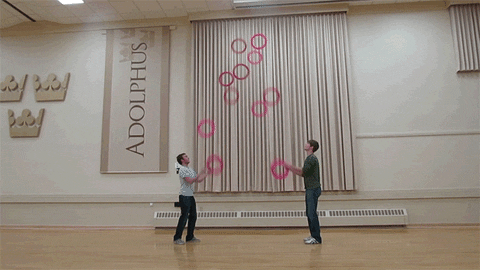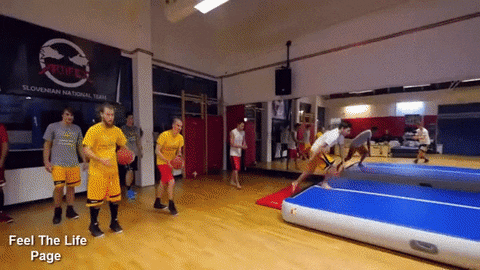In every job interview, sooner or later there will be the important question: Can you tell us about your teamwork skills? The importance of teamwork is continuously increasing in the IT world and coding geeks sitting in a dark basement are outdated.
And as you can see in the video, even the minions know that they are stronger if they combine their skills.
But if you plan to develop your own project in a team, you should be clear about some facts first:
- Fact one: If you choose your weekly meeting day, check on public holidays first!
- Fact two: Be prepared for discussions every evening before the weekly meeting day, in which the team members try to find out if the meeting really will take place at the usual meeting time the next day, or try to reschedule it due to other projects, family commitments or other events.
- Fact three: Don’t bother about appointments and other organizing matters too much, just be confident that everything will work out in the end.

Eight people – that’s a lot…
When we began working on this project, we were eight people coming from different universities and cities, studying in different semesters and taking different classes besides the one for this project. Some of the team members have jobs as working students besides the university classes and most of us had just met for the first time a week before. As this is a university project, we don’t have an office where everyone can be found at his desk all day long or questions can be solved during the coffee break.
We only have weekly classes and on top of that they take place on every Thursday from the middle of march to the end of June, which means that 7 out of 14 regular classes are cancelled due to holidays or university activities. Besides, we don’t have a project leader who tells us what to do next, but every team member has the same role and can make propositions or vote against a decision. This is a very interesting concept, but also implies a lot of discussions. That’s not an easy situation to deal with!

Tools, tools and some more tools!
But step by step we found out how to organize our team work by using some simple tools and guidelines, which we can strongly recommend.
First of all, it should be clear that every team member has to contribute something to the project and therefore should commit to the overall goal behind the project. As this project is a university project, we found it very important to frequently switch the fields of responsibility. Every team member has a different background in IT knowledge and therefore should get the chance to learn about the topics that he or she is interested in.
And besides, you should never forget about the bus factor! This black humour metaphor indicates the number of team members that can be hit by a truck before you have to stop the project because of a too big lack of knowledge. Of course you can dig deeper into a problem if you constantly work on it instead of being involved in many different topics. But there also is the risk of being stuck in your own thoughts and in this case you should never underestimate the power of input by someone who has another perspective on the problem.

To keep track of the project’s progress and to synchronize all team members on the same state of affairs, we are trying to meet in a weekly routine. For important communication in the meantime, we are using the hip and stylish messenger Slack. One big advantage of Slack is that you can invite all team members to a communication group, but also create multiple subchannels in which some people can discuss different topics without bothering the others.
During every meeting we are trying to write down all essential topics in a protocol. In every meeting we talk about the results of the tasks that have been prepared for today as well as the tasks that are going to be prepared for the next week. Besides, we write down the next meeting appointment and other important informations for the team.

When organizing the tasks to prepare for the next meeting, we rely on the main principle divide and conquer! Pair programming is nice, but not quite realizable with eight people. So we divided our team into 3-4 sub-teams consisting of all team members who want to take care of the same task. During the weekly meeting, every subteam therefore presents its results to the other subteams, so that everyone understands what has been done and where potential problems are. For the next week, new subteams are created depending on the work to be done.

Another topic in teamwork is the organization of all team documents such as the protocols. There are a lot of tools like Dropbox, where people can share files with others and even have a little version control in it.
.svg/2000px-Dropbox_logo_(2013).svg.png)
But the winner of all these tools is definitely Google Drive. Of course one should always ask the question if it is really necessary that Google gets to know not only everything we buy or like, but also on what kind of projects we are working on. But we have to admit that the Google Drive tools are really useful when it comes to team work, as you can easily share files and folders and especially work collaborative in the same document at the same time.

To develop our cloud service, we are using the IBM Bluemix platform. This also gives us the possibility to create development groups in which every team member has access to all projects developed by the group. Bluemix also provides a version control system so that custom git repositories can be used for different projects.

And did that actually work out?
To put it all in a nutshell, we were struggling a bit in the beginning to actually form a team out of us eight students. But with the help of some structure and useful tools we managed our teamwork pretty well and right now the workflow is really effective.
And just like the minions, we found out that we are stronger if we combine our interdisciplinary knowledge and learn from each other instead of trying to struggle through problems by ourselves. All for one and one for all!
In our next blogpost, we are going to tell you how we approached the mystery cloud everybody is talking about, and how we really got cloudified in the end. So keep on reading!

Written by Natali Bopp, Andreas Gold, Jonas Häfele, Merle Hiort, Martin Kopp, Christian Lang, Anna Poth und Eric Weislogel.

Leave a Reply
You must be logged in to post a comment.